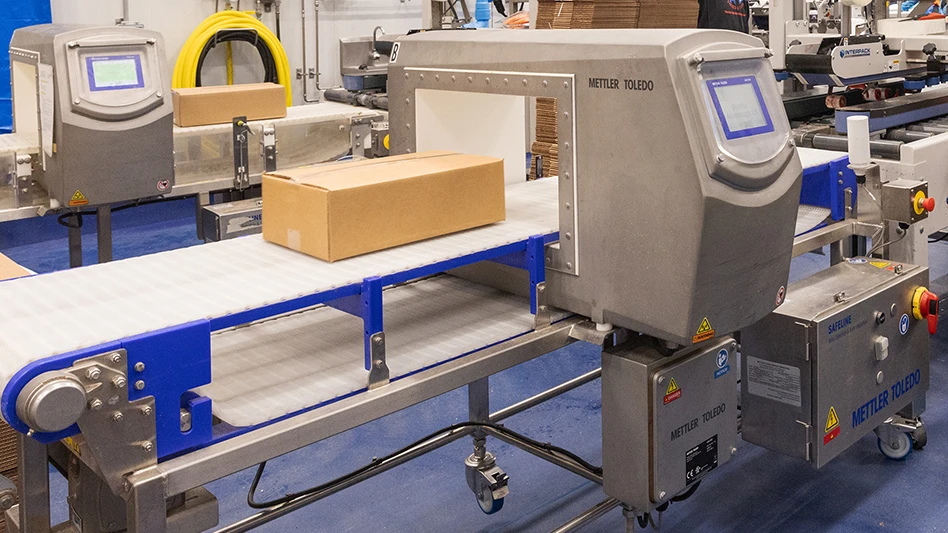Shellfish, produce and ready-to-eat foods are those most commonly associated with human norovirus outbreaks. But, according to a final draft/pre-decisional document report of the National Advisory Committee on Microbiological Criteria for Foods’ (NACMCF), there are inadequate data with which to identify the point(s) in the supply chain responsible for contamination, and its risk is more a factor of the practices used in production, handling, and distribution than an inherent property of a food.
The committee had been asked to assess the incidence and public health burden of human norovirus infection and the importance of food as a source of attribution; to provide advice on strategies to reduce, inactivate, and/or eliminate it in foods, on surfaces, and in the environment; to evaluate current methods of detection; and to determine the data needed for a quantitative risk assessment. With some findings, questions, and recommendations posted in the November 2014 draft report, Control Strategies for Reducing Foodborne Norovirus Infections (http://1.usa.gov/1K4E8Jq), the epidemiological evidence is seen as indicating that human norovirus infection is both common and difficult to control.
It is because of such aspects that the USDA National Institute of Food and Agriculture (USDA-NIFA) Norovirus Collaborative for Outreach, Research, and Education (NoroCORE) was formed in 2011 with North Carolina State University (NCSU) serving as the lead institution, and Lee-Ann Jaykus of NCSU as the lead investigator and scientific director for the project. The food safety initiative is funded by a five-year, $25 million Coordinated Agricultural Project grant from USDA-NIFA. With six core objectives—research, detection, epidemiology and risk assessment, preventive controls, extension and outreach, and capacity building—NoroCORE’s ultimate goal is to reduce the burden of foodborne disease associated with viruses, particularly noroviruses. The $25 million grant is unprecedented because foodborne viruses have never gotten that much attention, Jaykus said.
Transmission.
According to the World Health Organization, norovirus is one of the top three foodborne enteric disease agents responsible for the most deaths. In order, they are: Salmonella Typhi (52,000) enteropathogenic E. coli (37,000), then norovirus (35,000). Food can be contaminated with norovirus when infected people who have stool or vomit on their hands touch the food, food is placed on contaminated surfaces, drops of vomit land on food or surfaces, or an uninfected person touches a contaminated surface (such as a doorknob or light switch) then touches food or a food-contact surface.
Although foods are most often contaminated at preparation or service, norovirus may be introduced further up the food chain, such as in production, harvest, or processing, with differing levels of risk. For example, leafy greens that are mechanically harvested and packaged without further human contact would pose less risk than leafy greens that are handled numerous times between harvest and consumption.
Additionally, contaminated surfaces can play a role in both direct and indirect transmission of viruses. Norovirus has been shown to persist on stainless steel for more than six weeks, with greater persistence at cold temperatures.
The most common way that food becomes contaminated in the manufacturing plant is when a worker who is not feeling well handles food, said California Department of Public Health Research Scientist Michael Zwick. If the food is cooked after handling, it is not as likely to be an issue, but in plants that produce deli salads, mixed greens, hand-decorated baked goods, etc., such contamination is a definite risk.
A significant issue with norovirus is that a person can shed the virus before symptoms show and up to three weeks after, Zwick explained. So if that person is not practicing good hygiene, the food can be contaminated. Additionally, the low infectious dose and hardy nature of the virus particles mean even a single particle landing on a food-contact surface can survive and contaminate food.
“Microscopic amounts on hands and surfaces can result in numerous cases of illness,” Jaykus said.
Detection.
The current methods for detection of norovirus have significant limitations. “Testing is difficult because the virus cannot be cultivated outside the host [the human body], nor can a distinction be made between infectious and non-infectious particles,” said Clint Stevenson, assistant professor and distance education coordinator, NCSU Department of Food, Bioprocessing and Nutrition Sciences.
“In vitro [lab] methods do not yet exist, so this leaves us with in vivo [in a living organism] studies for detecting infectious norovirus particles,” he said. PCR can identify the presence of norovirus RNA, but this may or may not indicate the presence of infectious norovirus, he said. Detection also is difficult because, like the flu, there are different variants and the virus can change and mutate.
Historically, there have been three primary food classes associated with the virus, Jaykus said, molluscan shellfish, which can be exposed in their pre-harvest production phase by human contamination of the water; fresh produce, specifically those which contact the ground, come in contact with human fecal matter or contaminated wash water, or are contaminated by the hands of a picker; and ready-to-eat foods which are highly handled by humans and have no terminal heating step.
Elimination.
“Viruses are very, very, very resistant to a lot of sanitizers,” Jaykus said. Norovirus is resistant to quaternary and alcohol formulas, which is one reason that alcohol-based hand sanitizers cannot be relied on as the sole method for inactivating the virus. Additionally, she said, viruses can persist for long periods on surfaces and in foods. “They don’t grow, but they don’t go inactive; and they are not readily impacted by processing or common inactivation strategies in processing or foodservice,” such as preservatives, water activity, and freezing, she said. “In some ways it breaks all the rules.”
High heat can kill the virus, but the time and temperature for kill is not known, Jaykus said. While CDC states that the virus can survive temperatures as high as 140°F, New Zealand government publications say the internal temperature of a food must reach 90°C (194°F) for 90 seconds to kill the virus. “It seems to be more heat stable than was originally thought,” she said. Because of this, “excluding ill food handlers for 48 to 72 hours after symptoms subside is the best way to prevent contamination.” Then, strict hand hygiene is essential while they are still shedding.
For food-contact surfaces, the most effective cleaner is one of the most basic. That is, Zwick said, “A 10% bleach solution is a very powerful method.”
Prevention.
“Since norovirus contamination always originates at an infected person, several basic employee hygiene principles are the best approach to preventing and controlling norovirus,” Stevenson said. Toilet facilities should be regularly cleaned and disinfected, and plants should have plans for managing vomiting incidents. Policies for ill employees returning to work must be effective, and employees must wash their hands frequently enough to prevent cross contamination, he said.
With its extensive resistance to common detection, elimination, and prevention strategies, “your best control is handwashing and exclusion of ill workers,” Jaykus said. “Norovirus is a near-perfect pathogen. The only lack is that it doesn’t grow.”
The author is Editor of QA magazine. She can be reached at llupo@gie.net.

Explore the June 2015 Issue
Check out more from this issue and find your next story to read.
Latest from Quality Assurance & Food Safety
- CSQ Invites Public Comments on Improved Cannabis Safety, Quality Standards
- Registration Open for IAFNS’ Fifth Annual Summer Science Symposium
- Leaked White House Budget Draft Proposes Shifting Inspection Responsibilities from FDA to States
- Chlorine Dioxide: Reset the Pathogenic Environment
- Ferrero Group Invests $445 Million in Ontario Production Facility
- Nelson-Jameson Announces Grand Opening for Pennsylvania Distribution Center
- Taylor Farms Linked to Romaine E. coli Outbreak as Marler Clark Files Multiple Lawsuits Against Supplier
- IAFNS Announces Winners of Emerging Leader Awards for Food Safety, Nutrition






